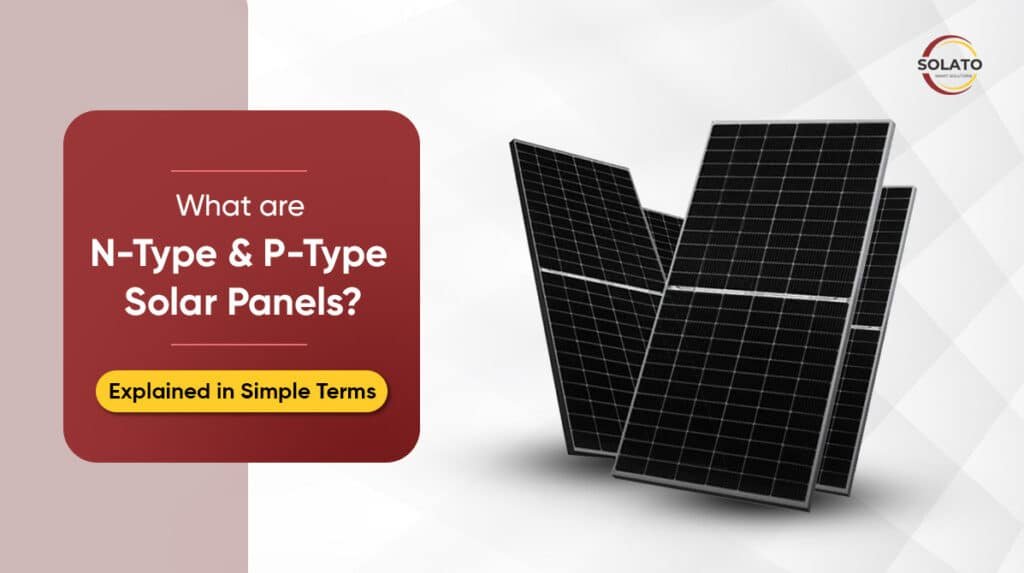
Introduction
Solar energy has emerged as a promising solution to the world’s energy challenges, offering clean, renewable power to homes and businesses. Central to this technology are solar panels, which come in various types, including N-type and P-type. In this comprehensive guide, we’ll delve into the intricacies of these solar panels, exploring their differences, benefits, and which one might be the right choice for your energy needs.
Understanding N-Type and P-Type Solar Panels
At the heart of every solar panel are semiconductor materials that convert sunlight into electricity through the photovoltaic effect. N-type and P-type refer to the types of semiconductor materials used in the construction of solar cells within the panels.
N-type solar cells are made using silicon wafers doped with elements like phosphorus, which introduces an excess of free electrons. These free electrons are negatively charged and enable the flow of electricity when sunlight strikes the cell.
On the other hand, P-type solar cells are created by doping silicon wafers with elements like boron, creating “holes” in the atomic structure where electrons are absent. When sunlight interacts with the cell, these holes facilitate the movement of electrons, generating electric current.
Canadian N-Type Solar Panels
Canada has emerged as a leader in solar panel technology, with companies like Canadian Solar pioneering the development of high-efficiency N-type solar panels. These panels incorporate innovative features such as passivated emitter rear contact (PERC) technology and bifacial design, enhancing their performance and durability.
Canadian N-type solar panels boast higher efficiency and greater resistance to temperature-induced degradation compared to traditional P-type panels. They are well-suited for a wide range of applications, including residential rooftop installations, commercial projects, and utility-scale solar farms.
Difference Between N-Type and P-Type Solar Panels
The primary difference between N-type and P-type solar panels lies in their conductivity and efficiency. N-type panels typically exhibit higher efficiency levels, particularly in low-light conditions, due to their superior electron mobility and reduced recombination losses.
P-type panels, while generally less efficient than their N-type counterparts, offer advantages in terms of cost-effectiveness and widespread availability. They are commonly used in residential and commercial solar installations where cost considerations play a significant role.
Which is Better: N-Type or P-Type Solar Panels?
Determining the superior option between N-type and P-type solar panels depends on various factors, including energy requirements, budget constraints, and environmental considerations.
N-type panels are ideal for applications where maximizing energy output and space efficiency are paramount, such as in urban environments with limited rooftop space or installations with partial shading. While they come at a higher initial cost, their long-term performance and reliability often justify the investment.
Conversely, P-type panels offer a more cost-effective solution for budget-conscious consumers and projects with ample sunlight exposure. Their widespread adoption and established manufacturing processes contribute to their affordability, making them a popular choice for residential and commercial installations worldwide.
N-Type Solar Panels Price in Pakistan vs. P-Type Solar Panels Price in Pakistan
In Pakistan, the cost of solar panels, whether N-type or P-type, depends on various factors such as brand, quality, installation complexity, and government incentives. Generally, N-type panels command a higher price due to their advanced technology and higher efficiency levels.
However, as the solar industry continues to evolve and manufacturing efficiencies improve, the price gap between N-type and P-type panels is gradually narrowing. Consumers in Pakistan can explore a range of options from reputable solar panel manufacturers and suppliers to find the best solution that meets their needs and budget.
Conclusion
In conclusion, N-type and P-type solar panels offer distinct advantages and cater to different needs within the solar industry. Whether you prioritize efficiency, affordability, or durability, there’s a solar panel solution available to meet your requirements. By understanding the differences between these panel types and considering factors such as location, budget, and energy goals, you can make an informed decision when investing in solar energy for your home or business.
FAQs
- Are N-type solar panels more durable than P-type panels?
N-type panels typically exhibit greater durability and resistance to temperature-induced degradation due to their advanced construction and materials.
- Can I mix N-type and P-type panels in the same solar array?
While it’s technically possible, mixing different types of panels can lead to efficiency losses and uneven performance. It’s generally recommended to use uniform panels within the same array for optimal results.
- Do N-type panels require special maintenance?
N-type panels require the same routine maintenance as P-type panels, including periodic cleaning and inspection for damage or debris buildup.
- How do I determine the optimal panel type for my home or business?
Consult with a reputable solar energy provider who can assess your energy needs, site conditions, and budget to recommend the most suitable panel type for your specific requirements.
Are N-type panels suitable for off-grid installations?
N-type panels can be used in off-grid applications, especially where space constraints or shading issues are a concern. Their higher efficiency and performance in low-light conditions make them well-suited for off-grid systems with limited sunlight exposure.
